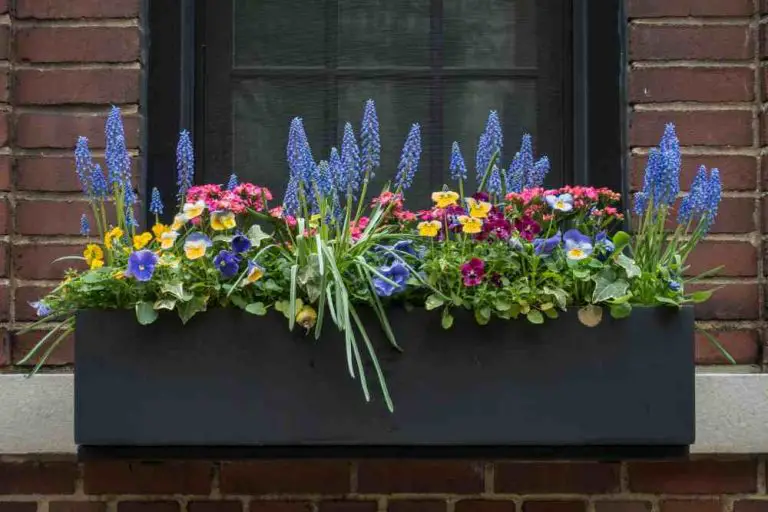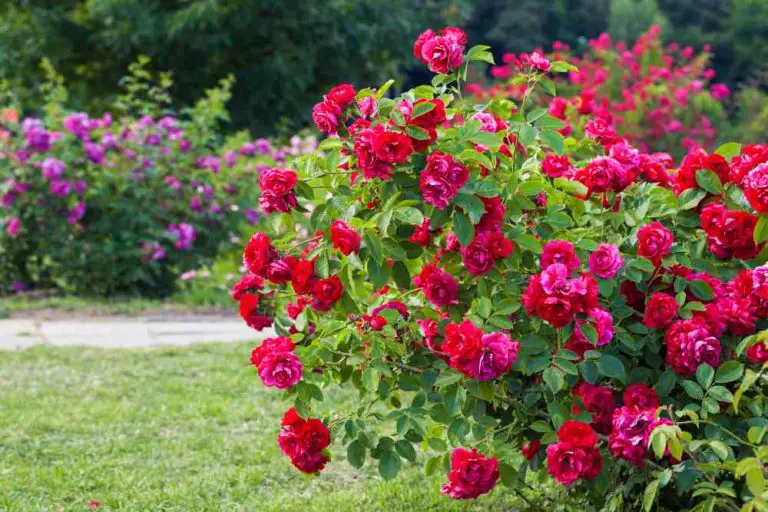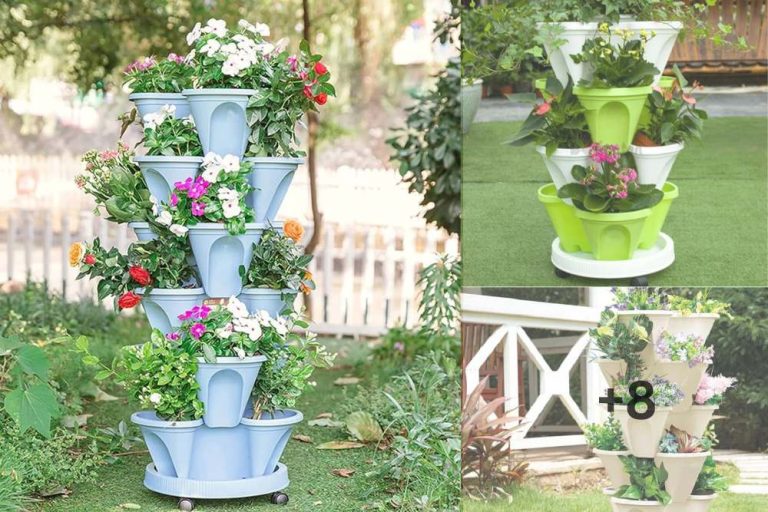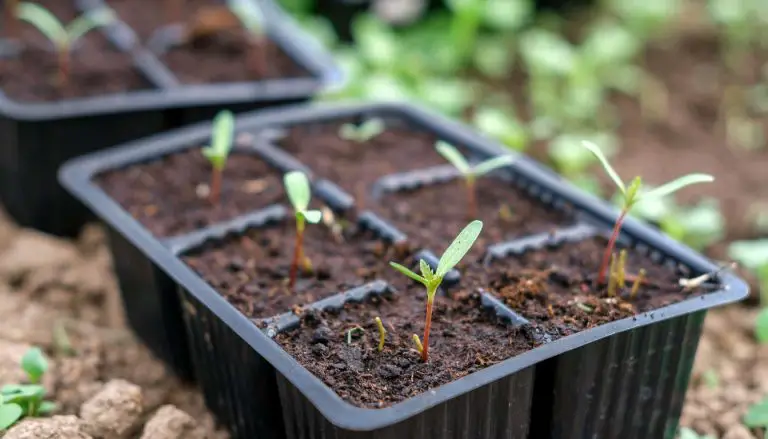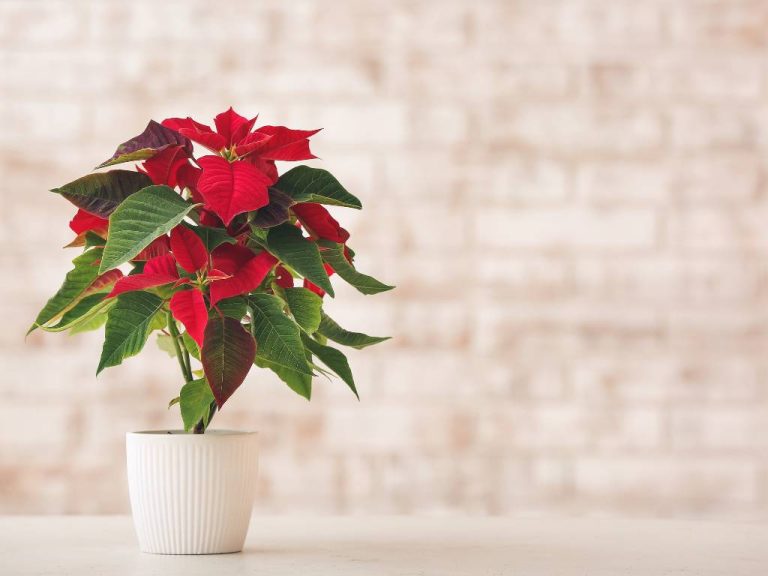Container Flower Gardening for Beginners Guide
Welcome to our Container Flower Gardening for Beginners Guide! If you’re new to gardening or have limited space, container flower gardening is the perfect solution for enjoying beautiful blooms. Whether you have a small balcony, a tiny patio, or even a windowsill, container gardening allows you to create a vibrant and colorful garden. In this guide, we will provide you with all the essential information and tips you need to get started on your container gardening journey.
Key Takeaways
- Container flower gardening is beginner-friendly and perfect for those with limited space.
- You can create a stunning container garden on a balcony, patio, or windowsill.
- Choose the right plants for your containers based on your climate and growing conditions.
- Proper drainage is crucial for the success of your container garden.
- Regular watering, fertilizing, and maintenance are important to keep your flowers healthy.
The Basics of Container Flower Gardening
In this section, beginners will learn the basic principles of container flower gardening. Understanding the essentials of container gardening is crucial for the success of your plants. Let’s dive into the key components that will ensure your container garden thrives.
Container Garden Essentials
Container gardening essentials encompass various factors that contribute to the health and growth of your plants. It involves selecting the right containers, choosing the appropriate soil, providing adequate sunlight, and implementing proper watering and fertilization techniques. These essentials form the foundation of a successful container garden.
Choosing the Right Flowers for Your Climate
When it comes to container gardening, your climate plays a significant role in determining the success of your flower choices. Different flowers have varying temperature and humidity requirements. It’s essential to research and select flowers that are well-suited to thrive in your specific climate. This ensures that your container garden will flourish all year round.
The Importance of Proper Drainage
Proper drainage is critical for the health of your container plants. Without sufficient drainage, excess water can accumulate in the soil, leading to root rot and other plant diseases. To avoid this, ensure that your containers have drainage holes at the bottom and use well-draining potting soil. Additionally, consider adding a layer of gravel or small rocks at the bottom of the pots to enhance drainage.
Read – Top Indoor Garden Containers
Container Choices: Picking the Perfect Pots
When it comes to container gardening, choosing the right pots is crucial for the success of your plants. In this section, we will explore the different container materials, discuss the importance of size and depth, and delve into the world of drainage solutions. Let’s dive in!
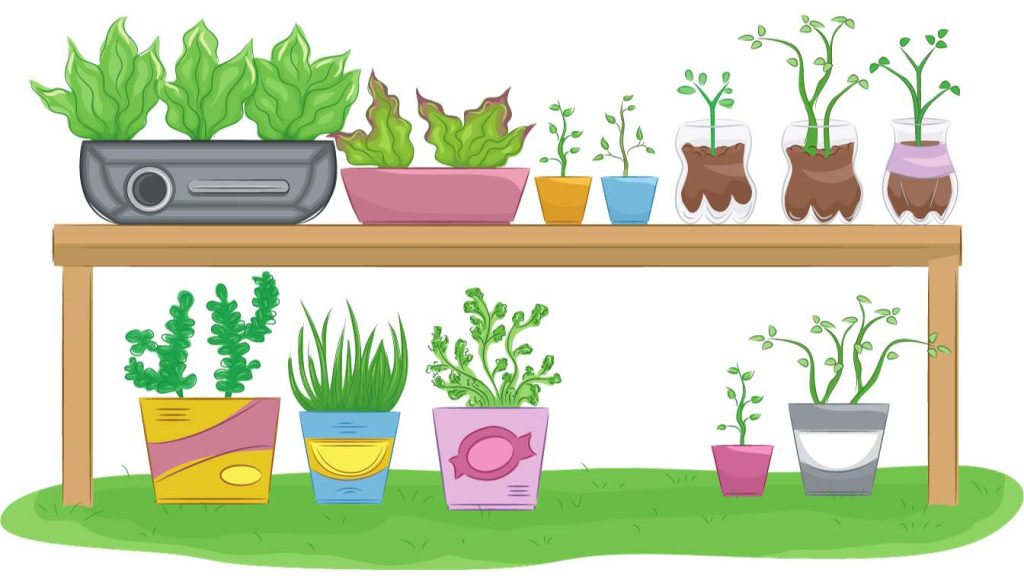
Pros and Cons of Different Container Materials
There are various container materials available in the market, each with its own set of advantages and considerations.
Considering Size and Depth for Plant Health
The size and depth of your containers play a crucial role in the health and growth of your plants.
For small, shallow-rooted plants like herbs or annuals, a container with a depth of 6-8 inches may be sufficient. However, larger plants or those with deep root systems will require deeper containers, typically around 12-16 inches deep.
Ensuring adequate room for root development is essential for plant health and productivity. It is always better to choose containers that provide ample space for the roots to thrive.
Drainage Requirements and DIY Solutions
Proper drainage is vital for preventing waterlogging and ensuring the optimal health of your container plants.
Most containers come with drainage holes at the bottom to allow excess water to escape. However, if your pots lack drainage holes, you can create your own using a drill or by lining the bottom with a layer of gravel or broken pottery pieces.
Another DIY solution for improving drainage is to use pot feet or elevate your containers using bricks or blocks. This allows water to drain freely from the bottom, preventing water stagnation that can lead to root rot.
Remember, waterlogged roots can cause your plants to suffer, so it’s crucial to ensure proper drainage in your containers.
Soil and Nutrition
When it comes to container flower gardening, the right soil and proper nutrition are crucial for the success of your plants. The soil you choose will serve as the foundation for your flowers, providing essential nutrients, drainage, and moisture retention. Additionally, providing the right nutrition will ensure optimal growth and vibrant blooms.
When selecting soil for your container garden, it’s important to use a high-quality potting mix specifically designed for container plants. These mixes are specially formulated to provide excellent drainage while retaining moisture, creating an ideal growing environment for your flowers. Avoid using regular garden soil, as it can become compacted and hinder root growth in containers.

In addition to potting mixes, you can also incorporate amendments to further enhance the soil’s fertility. Organic matter, such as compost or well-rotted manure, can be mixed into the potting mix to provide additional nutrients and improve soil structure. This will promote healthy root development and overall plant vitality.
Nutrition is equally important in container gardening. Fertilizing your container flowers regularly will replenish the nutrients that can become depleted over time. Choose a balanced fertilizer with a ratio of nitrogen (N), phosphorus (P), and potassium (K) that suits the needs of your plants. Slow-release or liquid fertilizers are both effective options for container gardens.
Read – Best Homemade Fertilizer For Flowering Plants 2024
Remember to follow the recommended fertilization schedule and dosage based on the specific needs of your flowers. Overfertilization can lead to excessive foliage growth and reduced blooming, while underfertilization can result in stunted growth and pale, unhealthy plants.
By paying attention to your container garden’s soil and nutrition, you will provide a solid foundation for your flowers to thrive. Remember to monitor the moisture levels, adjust watering as needed, and feed your plants regularly to ensure they receive the essential nutrients they need for vigorous growth and beautiful blooms.
Sunlight and Placement for Optimal Growth
One of the key factors in achieving optimal growth and blooms in container flower gardening is providing the right amount of sunlight. Different flowers have varying sunlight requirements, so beginners need to understand how to decipher these requirements for each plant in their container garden.
Deciphering Sun Requirements for Various Flowers
To ensure the well-being of your flowers, it’s crucial to know whether they thrive in full sun, partial shade, or full shade. Some flowers, such as petunias and marigolds, require direct sunlight for at least 6 to 8 hours a day to reach their full potential.
Impatiens and begonias prefer partial shade and can tolerate less intense sunlight. Shade-loving plants like ferns or caladiums can thrive in full-shade conditions. By researching the sunlight requirements of different flowers, you can strategically place them in your container garden to optimize their growth and blooming capabilities.
Tips for Balancing Shade and Light
Creating a harmonious balance between shade and light is essential for the overall health and vigor of your container plants. If you have flowers that prefer full sun, but your garden only receives partial sunlight, you can strategically use shade-providing elements like trellises, arbors, or other taller plants to create filtered light conditions.
This will help you strike a balance that allows your sun-loving flowers to thrive while protecting them from excessive heat or sunburn. Additionally, rotating your containers periodically can help ensure that all sides of the plants receive adequate sunlight, promoting even growth and vibrant blooms.
Maximizing Blooms with Strategic Container Placement
The strategic placement of containers can significantly impact the overall appearance and blooming potential of your garden. Consider placing containers in areas that receive the appropriate amount of sunlight for your particular flowers. For example, if you have containers with shade-loving plants, position them under trees or on a shaded patio.
If you have containers with sun-loving flowers, place them in areas where they can bask in direct sunlight for the recommended duration. By taking into account the sunlight requirements of your flowers and strategically placing your containers, you can create a visually stunning and thriving container garden.
Container Flower Gardening for Beginners: Basic Steps
Are you ready to embark on your container flower gardening journey? In this section, we will guide you through the first steps to take as a beginner. Let’s get started!
First and foremost, you need to prepare your containers. Choose containers that are suitable for the size and type of flowers you want to grow. Ensure that your containers have drainage holes to prevent waterlogging and ensure proper airflow for the roots. Consider using pots made of materials like plastic, clay, or wood, as they provide good insulation and allow for adequate drainage.
Once you have your containers ready, it’s time to select your flowers. As a beginner, it’s best to choose flowers that are easy to grow and require minimal maintenance. Some popular choices for beginners include marigolds, petunias, impatiens, and geraniums. Consider the sunlight and temperature requirements of the flowers you choose, and select those that are suitable for your climate.
When it comes to planting, make sure to use a high-quality potting mix specifically formulated for container gardening. Fill your containers with the potting mix, leaving some space at the top for watering. Gently remove the seedlings or plants from their nursery pots, loosen the root ball, and place them in the containers. Press the soil firmly around the roots to secure the plants.
Now that you have your containers prepared and plants planted, it’s time to establish a basic care routine. Water your container flowers regularly, making sure not to overwater or underwater them. Check the moisture level of the soil by inserting your finger about an inch deep into the soil. If it feels dry, it’s time to water. Fertilize your container flowers with a balanced, slow-release fertilizer according to the package instructions to provide them with the necessary nutrients for growth and blooming.
As a beginner, it’s also important to monitor your container flowers for any signs of pests or diseases. Inspect the leaves, stems, and flowers regularly and take prompt action if you spot any issues. Remove any dead or yellowing leaves, and prune your plants as needed to promote healthy growth.
With these basic steps, you are well on your way to becoming a successful container flower gardener. Stay tuned for more tips and guidance as you continue your container gardening journey!
Designing Your Container Arrangements
In container gardening, designing visually appealing flower arrangements is key to creating a stunning container garden that will captivate and delight. By combining different flowers, foliage, and textures, you can achieve beautiful and harmonious container flower arrangements that will become the focal point of your garden.
To create visually appealing combinations in your container garden, consider the following tips:
Creating Visually Appealing Flower Combinations
When selecting flowers for your container arrangements, choose varieties that complement each other in terms of color, height, and form. Experiment with contrasting or complementary colors to add visual interest to your arrangements. For example, pair vibrant red flowers with cool blue foliage for a striking combination.
Additionally, mix flowers with different shapes and sizes to create a dynamic arrangement. Combine tall and spiky flowers, like salvia or snapdragons, with mounded or bushy varieties, such as petunias or geraniums, to add depth and texture to your container garden.
The Thriller, Filler, and Spiller Technique
The thriller, filler, and spiller technique is a popular method used in container gardening to create well-balanced and visually appealing arrangements.
The thriller refers to a tall and eye-catching plant that serves as the centerpiece or focal point of the arrangement. This could be a vertical-growing flower, like a dahlia, or a grass-like plant, like an ornamental millet.
The filler plants are medium-sized plants that surround the thriller and add volume and texture to the arrangement. These can be flowering or foliage plants, such as begonias or coleus.
The spiller plants are trailing or cascading plants that spill over the edges of the container, softening the overall arrangement. Examples include trailing petunias or cascading ivy.
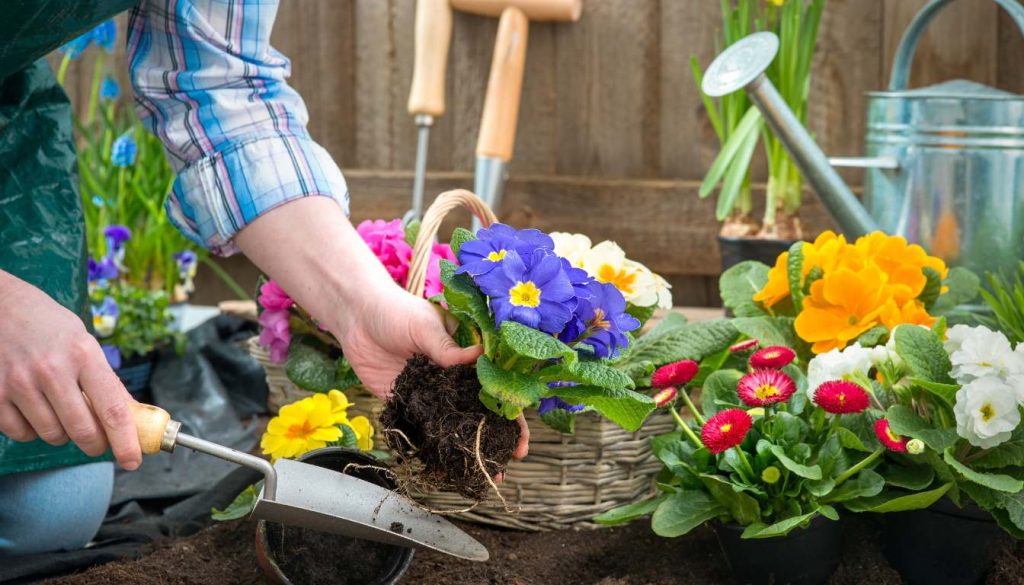
Crafting a Focal Point with Floral Features
In addition to the thriller, filler, and spiller plants, you can further enhance the visual appeal of your container arrangements by adding unique floral features as focal points. Incorporate bold and captivating blooms, like large sunflowers or vibrant roses, to create a focal point that draws attention and adds a touch of drama to your container garden.
You can also experiment with different container types, colors, and textures to complement and highlight the flowers. Consider using decorative pots, hanging baskets, or even repurposed household items to add an element of creativity and uniqueness to your container arrangements.
With these design techniques, you can create visually stunning container flower arrangements that will transform your garden into a picturesque oasis. Let your creativity bloom and have fun exploring different combinations and arrangements to create a container garden that is truly your own.
Watering Techniques for Healthy Container Flowers
Proper watering is crucial for maintaining healthy container flowers. This section will provide beginners with essential watering techniques to keep their plants thriving and blooming. Follow these watering tips for healthy flowers in your container garden:
1. Frequency: Regular watering is essential, especially during the hot summer months. Check the moisture level of the soil by inserting your finger into the top inch of soil. If it feels dry, it’s time to water. Avoid overwatering, as it can lead to root rot and other issues.
2. Method: When watering container plants, it’s best to water thoroughly, allowing water to soak through the entire root zone. Avoid shallow watering that only wets the top layer of soil. Use a watering can or a hose with a nozzle attachment for better control.
3. Drainage: Adequate drainage is crucial for container plants. Ensure that your pots have drainage holes to allow excess water to escape. This prevents waterlogging and helps maintain healthy root systems.
4. Signs of Overwatering: Watch for signs of overwatering, such as yellowing leaves, wilting, or moldy soil. If you notice any of these signs, adjust your watering schedule accordingly.
5. Signs of Underwatering: On the other hand, underwatering can cause plants to droop, and the soil may become dry and crumbly. Adjust your watering routine if you observe these symptoms.
6. Consider Climate: Consider the climate in your area when developing a watering routine. Plants in hot, dry climates may require more frequent watering, while those in cooler regions may require less.
Read – 9 DIY Automatic Watering System for Indoor Plants
Feeding Your Flowers: Fertilization Fundamentals
Proper fertilization is essential for the healthy growth and vibrant blooms of your container flowers. In this section, we will explore the basics of fertilizing your plants, including choosing the right fertilizer, understanding the role of organic options in container gardening, and creating a feeding schedule to optimize growth and flowering.
Choosing the Right Fertilizer
When it comes to fertilizing your container flowers, it’s crucial to select the appropriate fertilizer for optimal results. Look for a fertilizer specifically formulated for flowering plants in containers. These fertilizers are typically high in phosphorus, which promotes flower production. Consider using slow-release granular fertilizers, as they provide a steady supply of nutrients over an extended period.
The Role of Organic Options in Container Gardening
Organic fertilizers offer a natural and environmentally friendly alternative for your container garden. They are derived from plant and animal sources, providing a range of nutrients in a slow-release form.
Organic fertilizers improve soil health, enhance nutrient availability, and support beneficial microbial activity. Look for organic options such as compost, worm castings, and seaweed-based fertilizers to nourish your container flowers.
Creating a Feeding Schedule to Maximize Growth
Establishing a feeding schedule is essential to ensure your container flowers receive the necessary nutrients throughout their growth cycle. Begin fertilizing your plants once they have established a strong root system, usually a few weeks after planting. Follow the instructions on the fertilizer package for application rates. As a general guideline, fertilize your container flowers every four to six weeks during their active growing season. Adjust the frequency and amount based on the specific needs of your plants and their growth rate.
Remember not to over-fertilize, as it can lead to nutrient burn and other growth problems. Always water your container flowers thoroughly before fertilizing to prevent root damage. Regularly monitor the health of your plants and adjust your feeding schedule accordingly.
Read – Choosing the Best Fertilizer For Flower Seedlings
Maintenance and Grooming of Container Plants
Once you’ve set up your beautiful container garden, it’s important to maintain and groom your plants to ensure their continued health and beauty. Regular maintenance tasks such as pruning, deadheading, and pest control will go a long way in keeping your container plants flourishing. Here are some essential grooming tips for your container gardening:
1. Pruning
Pruning is an important aspect of container plant maintenance. Regularly trimming back overgrown branches and stems helps promote healthy growth and maintains the desired shape of your plants. Use clean, sharp pruning shears to make clean cuts just above a leaf node or bud to encourage new growth.
2. Deadheading
Deadheading entails removing spent flowers from your plants. By snipping off the faded blooms, you encourage the formation of new flowers and prevent the plant from diverting energy into producing seeds. Deadheading also keeps your containers looking tidy and visually appealing.
3. Pest Control
Pests can wreak havoc on your container plants, so it’s important to regularly monitor and address any pest issues promptly. Inspect your plants regularly and take action at the first sign of infestation. Organic Indoor Plant Pest Spray, such as neem oil or insecticidal soaps, can be effective and safe options for controlling pests in your container garden.
4. Watering and Fertilizing
Proper watering and fertilizing play crucial roles in maintaining the health of your container plants. Be sure to follow a consistent watering schedule, providing sufficient moisture without overwatering. Additionally, fertilize your plants regularly with a balanced fertilizer to provide the necessary nutrients for healthy growth and vibrant blooms.
5. Monitoring Soil Moisture
Regularly check the moisture level of the soil in your containers by sticking your finger about an inch deep into the soil. If it feels dry, it’s time to water. If it feels moist, hold off on watering to avoid overwatering. Finding the right balance will help prevent root rot and other moisture-related issues.
6. Regular Inspections
Take the time to inspect your container plants regularly for any signs of disease or stress. Look for wilting leaves, yellowing foliage, or unusual spots or growths. Early detection and treatment can prevent the spread of diseases and ensure healthy, thriving plants in your container garden.
Protecting Plants from Extreme Weather
Extreme weather conditions can pose a threat to container plants, but with the right techniques, you can protect your precious blooms. Whether it’s frosty winter nights or scorching summer heat, there are measures you can take to keep your container plants safe and thriving.
Sheltering Plants from Frost
During frosty nights, it’s important to provide your plants with adequate protection to prevent damage. One method is to bring your containers indoors or move them to a sheltered area like a garage or covered porch.
Alternatively, you can cover your plants with fabric or lightweight blankets, securing them with stakes or clips to create a protective barrier against the cold. Remember to remove the coverings during the day to allow sunlight and air circulation.
Combatting the Summer Heat
As the temperature rises, container plants can suffer from heat stress. To help them cope with the summer heat, place your containers in areas with partial shade or create shade using umbrellas, shade cloth, or plant screens.
Additionally, mulching the soil surface around your plants can help retain moisture and regulate temperatures. Regular watering is crucial during hot weather, making sure not to overwater or underwater your plants. Monitor the moisture level and adjust your watering routine accordingly.
Container Mobility for Plant Safety
In extreme weather conditions, container mobility is an advantage. Move your containers to a suitable location based on the specific weather challenge. If a heatwave hits, consider relocating your pots to a cooler spot.
During a sudden frost, having the flexibility to move your plants indoors or to a more sheltered area can prevent damage. Choose lightweight containers or invest in movable plant caddies to make the process easier.
Seasonal Considerations and Changeovers in Container Planting
As the seasons change, so should your container garden. It’s important to consider the seasonal requirements and make the necessary changeovers to ensure the health and beauty of your plants. In this section, we will discuss how to refresh containers with seasonal plants, transition from summer to fall container displays, and implement winterizing strategies for your perennial blooms.
Refreshing Containers with Seasonal Plants
To keep your container garden looking vibrant and appealing throughout the year, it’s essential to refresh your containers with seasonal plants. As the seasons change, select flowers and foliage that are suitable for the specific time of year.
For example, in the spring, opt for colorful tulips or daffodils, while in the summer, consider vibrant petunias or geraniums. By choosing plants that thrive in each season, you can ensure that your containers are always filled with the beauty of nature.
Transitioning From Summer to Fall Container Displays
As summer comes to an end and fall approaches, it’s time to transition your container displays to reflect the changing season. Remove any summer annuals that have started to fade and replace them with fall favorites such as mums, asters, or ornamental kale.
Consider incorporating autumnal colors like oranges, yellows, and deep reds to create a warm and inviting container display. Don’t forget to adjust your watering and fertilization routine to match the changing needs of your plants during this transition.
Winterizing Strategies for Perennial Blooms
When winter arrives, it’s important to take steps to protect your perennial blooms from the cold temperatures. Insulate your containers by wrapping them with burlap or bubble wrap to provide some extra warmth.
Remember to remove any dead or dying foliage and cut back any overgrown perennials to prevent disease and promote healthy growth in the spring. Additionally, consider moving your containers to a sheltered area, such as a garage or covered porch, to shield them from harsh winter winds and extreme temperature fluctuations.
Repurposing Household Items for Unique Planters
Looking for creative and budget-friendly ways to add a unique touch to your container garden? Why not repurpose household items as planters? Not only will this give your garden a one-of-a-kind look, but it also reduces waste and adds a fun DIY element to your gardening experience.
There are countless everyday objects that can be transformed into beautiful planters. Here are a few ideas to get you started:
Remember, the key to repurposing household items as planters is to ensure proper drainage. Drill or punch holes in the bottom of the item to allow excess water to escape.
So, look around your house and let your creativity shine. Repurposing household items as unique planters is not only a sustainable choice but also a great way to add personality and style to your container garden.
Creative Container Gardening Ideas and Inspiration
As you embark on your container gardening journey, it’s important to let your creativity flourish. In this section, we’ll explore a variety of creative container gardening ideas and provide inspiration to take your gardening skills to the next level.
One way to add a unique touch to your container garden is by experimenting with different container designs. Think outside the box and repurpose everyday items such as vintage tea kettles, colorful ceramic bowls, or even old bicycle baskets. These unconventional containers not only add visual interest but also spark conversations among garden enthusiasts.
Another way to get creative is by experimenting with innovative plant combinations. Mix and match flowers with different shapes, sizes, and colors to create visually stunning displays. Consider pairing vibrant marigolds with delicate petunias, or cascading sweet potato vines with towering sunflowers. The possibilities are endless, and the results can be truly breathtaking.
If you’re looking for inspiration, look no further than stunning examples of container gardens created by gardening enthusiasts around the world. Browse through gardening magazines and online platforms to discover breathtaking designs that match your style and vision. These examples can provide a wealth of ideas and help you visualize different ways to arrange your container garden.
FAQ
What are the basic principles of container flower gardening?
The basic principles include understanding container garden essentials, choosing the right flowers for your climate, and ensuring proper drainage for your containers.
How do I choose the right pots for my container garden?
Consider the pros and cons of different container materials, select pots that are the appropriate size and depth for plant health, and ensure proper drainage with DIY solutions.
What is the importance of soil and nutrition in container flower gardening?
The proper soil composition and nutrition are crucial to the success of your container flowers. Using potting mixes and amendments and providing proper nutrition will help your plants thrive.
How do I optimize sunlight and placement for my container flowers?
Decipher the sun requirements of different flowers, balance shade and light in your container garden and strategically place your containers for optimal growth and bloom.
What are the first steps to take when starting a container flower garden?
Prepare your containers, select and plant your flowers, and follow basic care practices to set yourself up for success in container gardening.
How can I design visually appealing container flower arrangements?
Create stunning combinations of flowers, foliage, and textures, utilize the thriller, filler, and spiller techniques for balanced arrangements, and create focal points with unique floral features.
What are some tips for proper watering of container plants?
Follow proper watering practices, including frequency and methods, and be aware of signs of overwatering or underwatering.
How do I fertilize my container flowers?
Choose the right fertilizer, explore organic options, and create a feeding schedule to provide proper nutrition for optimal growth and bloom.
How do I maintain and groom my container plants?
Learn how to care for your container flowers, including pruning, deadheading, and pest control, to keep your garden looking healthy and beautiful.
How do I protect my container plants from extreme weather conditions?
Learn techniques for sheltering plants from frost, managing the summer heat, and ensuring the mobility of containers for the safety of your plants.
What should I consider for seasonal changeovers in container planting?
Refresh your containers with seasonal plants, transition from summer to fall container displays, and implement winterizing strategies for the survival of perennial blooms.
Can I use household items as planters for my container garden?
Yes! Discover innovative ways to repurpose everyday objects, such as old chairs, boots, and colanders, as unique containers for your flowers.
Where can I find creative ideas and inspiration for container gardening?
Explore creative container designs, innovative plant combinations, and stunning examples of container gardens to nurture your creativity and enhance your gardening experience.
- 15 Ingenious Kitchen Garden Ideas to Cultivate Freshness Right at Home - April 7, 2024
- 10 Top Picks Best Plants for Open Terrarium - April 2, 2024
- 21 Easy and Cheap Walkway Ideas for a Charming Garden - March 31, 2024



